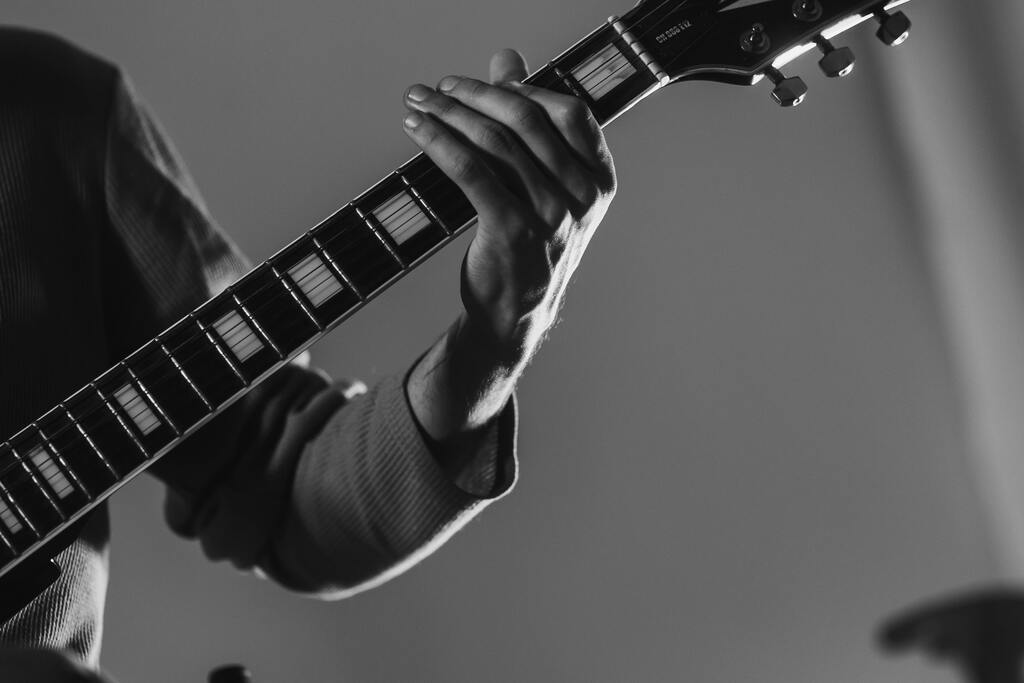Blues Modules
- Overview of blues origins (pre-1920s work songs, spirituals, and field hollers)
- Artists: Son House, Blind Lemon Jefferson, Charley Patton
- Techniques:
- Open position blues licks
- Simple 12-bar blues (I-IV-V) in open and first position
- Thumb and fingerpicking basics
- Basic shuffle rhythm
- Evolution of Delta Blues (1920s–1930s)
- Artists: Robert Johnson, Skip James, Bukka White
- Techniques:
- Introduction to bottleneck slide guitar (open tunings: Open G & Open D)
- Turnarounds and walking bass lines
- Call-and-response phrasing
- Fingerstyle blues patterns
- The evolution of Texas blues (1930s–1940s)
- Artists: Blind Willie Johnson, Lightnin’ Hopkins, T-Bone Walker
- Techniques:
- Alternating bass fingerpicking (Lightnin’ Hopkins)
- Early electric blues phrasing (T-Bone Walker's jump-blues licks)
- Major/minor pentatonic contrast in lead playing
- Artists: B.B. King, Howlin’ Wolf, Albert King
- Techniques:
- B.B. King’s “butterfly vibrato” and phrasing
- Call-and-response lead techniques
- Basic string bending techniques
- Using dynamics to shape a solo
- Artists: Muddy Waters, Little Walter, Buddy Guy, Otis Rush
- Techniques:
- Muddy Waters’ electric slide playing
- 8-bar blues and slow blues variations
- Chicago-style turnarounds and chord stabs
- Double stops and early blues phrasing
- The swing and jump blues connection (1940s–1950s)
- Artists: T-Bone Walker, Pee Wee Crayton, Gatemouth Brown
- Techniques:
- Chord substitutions in 12-bar blues
- Mixing blues and jazz phrasing
- Jazzier blues progressions with dominant 9th and 13th chords
- Walking bass lines and comping for rhythm guitar
- How blues was transformed by British players (1960s)
- Artists: Eric Clapton, Peter Green, Jeff Beck
- Techniques:
- Slow blues phrasing (Peter Green’s touch)
- Overdriven blues tones (Cream-era Clapton)
- Early fusion of blues and rock guitar
- The birth of blues-rock and its southern roots (1970s)
- Artists: Freddie King, Stevie Ray Vaughan, Billy Gibbons (ZZ Top)
- Techniques:
- Texas shuffle rhythm playing (SRV-style)
- Hybrid picking & aggressive bending (Freddie King influence)
- Open-string licks and pedal-point phrasing
- Artists: Buddy Guy (later years), Robert Cray
- Techniques:
- Soulful phrasing and chord voicings
- Combining major and minor pentatonics in expressive phrasing
- Rhythm guitar in blues ballads
- The modern jazz-influenced blues style
- Artists: Robben Ford, Larry Carlton
- Techniques:
- Chord-melody integration in solos
- Mixing altered scales (Dorian, Mixolydian, and outside tones)
- Sophisticated phrasing and chromatic passing tones
- Artists: John Scofield, Matt Schofield, Eric Johnson
- Techniques:
- Applying bebop phrasing to blues
- Adding funk rhythm guitar techniques
- Advanced legato and economy picking in blues fusion
- Combining everything into a personal style
- Creating longer blues solos with dynamic storytelling
- Expanding phrasing with intervallic ideas and modal flavours
- How to apply the Robben Ford approach in a real-world jam
